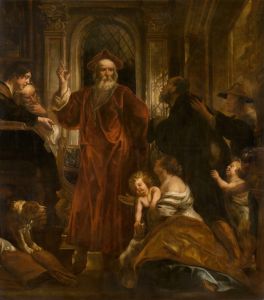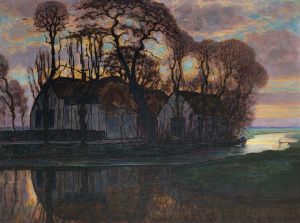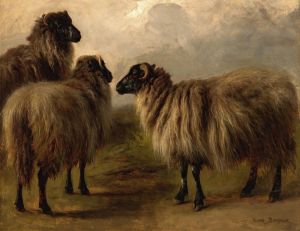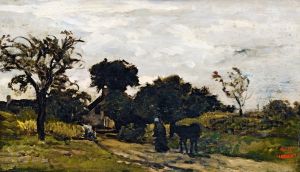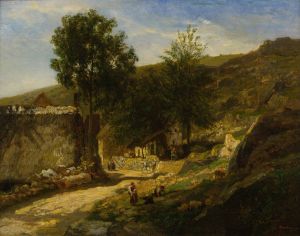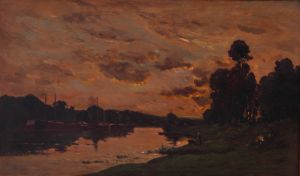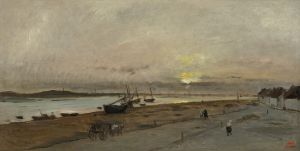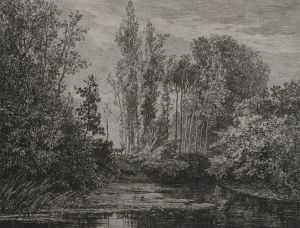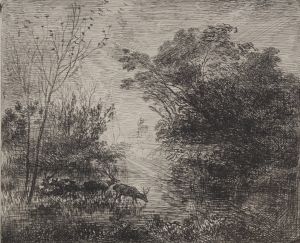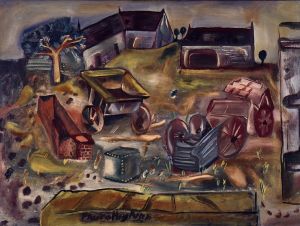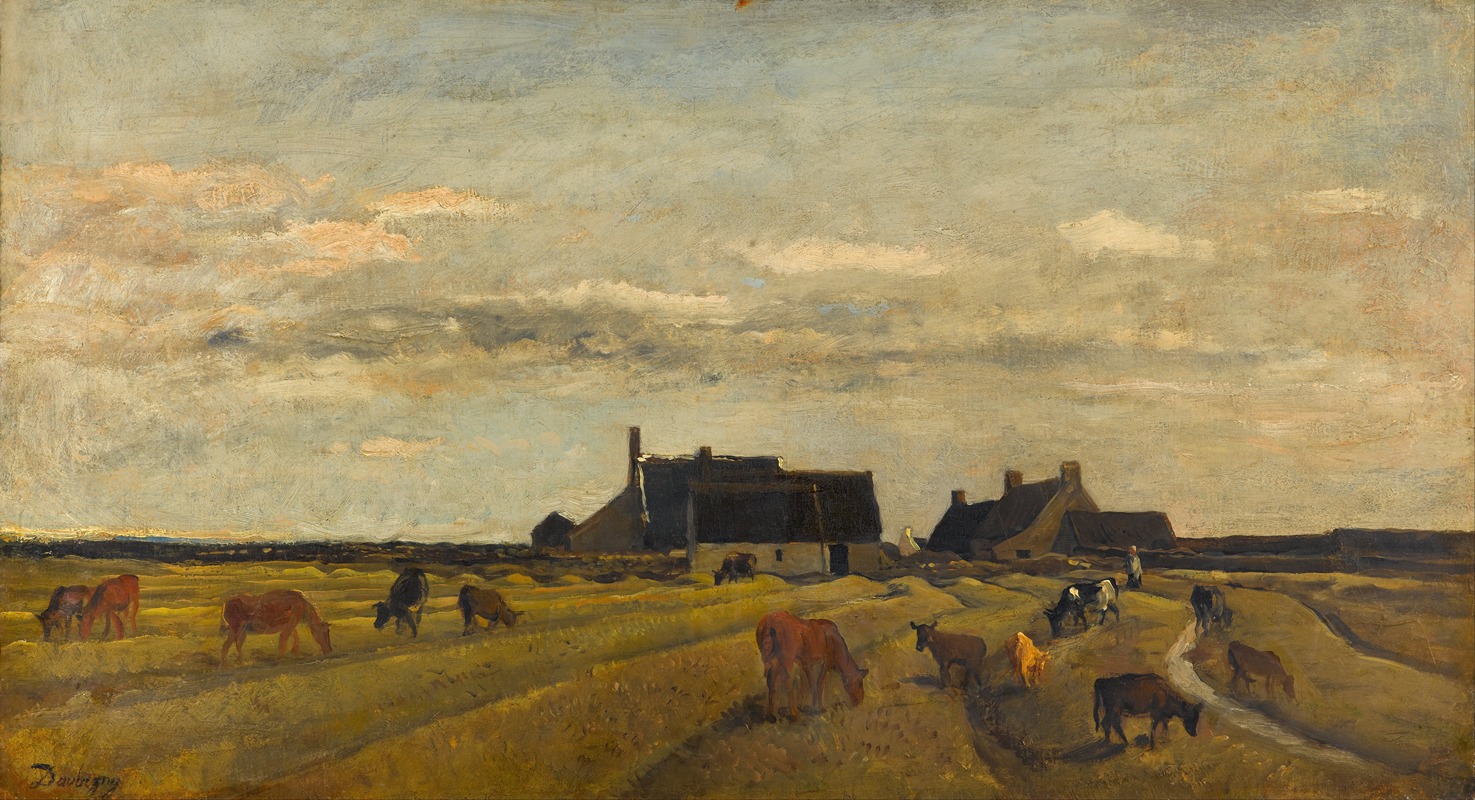
Farm at Kerity, Brittany
A hand-painted replica of Charles François Daubigny’s masterpiece Farm at Kerity, Brittany, meticulously crafted by professional artists to capture the true essence of the original. Each piece is created with museum-quality canvas and rare mineral pigments, carefully painted by experienced artists with delicate brushstrokes and rich, layered colors to perfectly recreate the texture of the original artwork. Unlike machine-printed reproductions, this hand-painted version brings the painting to life, infused with the artist’s emotions and skill in every stroke. Whether for personal collection or home decoration, it instantly elevates the artistic atmosphere of any space.
Charles François Daubigny, a prominent French landscape painter of the 19th century, created the artwork Farm at Kerity, Brittany. This painting is an example of Daubigny's dedication to capturing the natural beauty of rural landscapes, a hallmark of his artistic career. Daubigny was a key figure in the Barbizon School, a group of painters who sought to move away from the formalism of academic art and instead focus on the realistic depiction of nature.
The painting depicts a farm in Kerity, a small village in Brittany, France. Brittany, known for its rugged coastline, traditional rural life, and unique cultural identity, was a popular destination for artists during the 19th century. Its picturesque scenery and distinctive light made it an appealing subject for painters like Daubigny. In this work, Daubigny employs his characteristic loose brushwork and subtle use of color to convey the tranquil atmosphere of the rural setting.
Daubigny was known for his innovative approach to painting en plein air (outdoors), which allowed him to capture the immediacy and changing effects of light and atmosphere in his landscapes. This technique was influential in the development of Impressionism, and artists such as Claude Monet and Camille Pissarro admired and were inspired by his work. While Farm at Kerity, Brittany predates the Impressionist movement, it reflects Daubigny's forward-thinking approach to landscape painting.
The exact date of the painting's creation is not definitively documented, but it is consistent with Daubigny's mature period, during which he frequently traveled throughout France to paint its diverse landscapes. The work exemplifies his ability to depict the harmony between human habitation and the natural environment, a recurring theme in his oeuvre.
Today, Farm at Kerity, Brittany is recognized as an important example of Daubigny's contribution to 19th-century landscape painting. It demonstrates his skill in capturing the essence of a place and his influence on subsequent generations of artists. The painting is held in a public or private collection, though specific details about its current location are not readily available.





